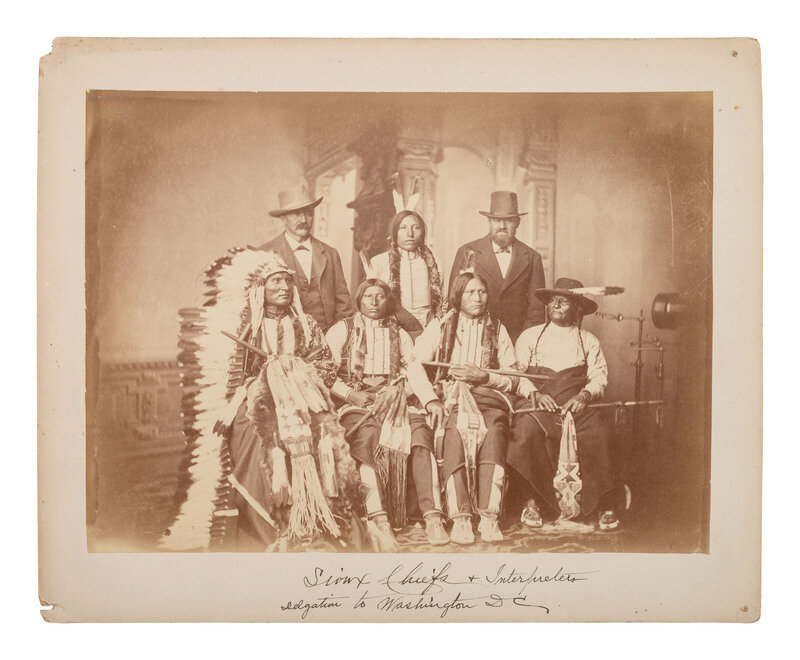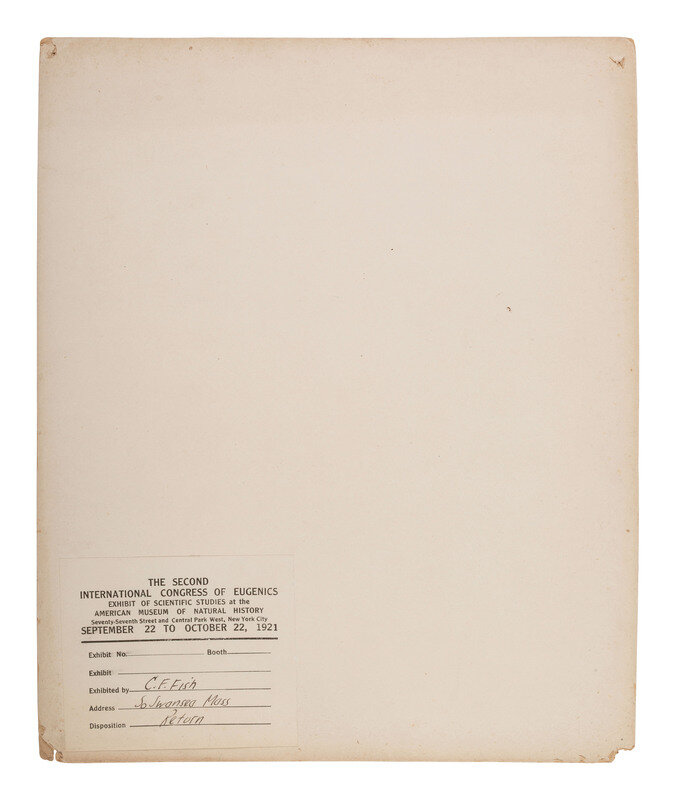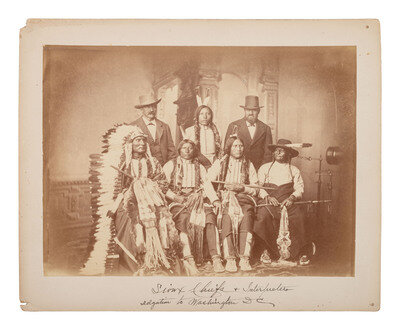Condition Report
Contact Information
Auction Specialist
Lot 267
Sale 6425 - American Historical Ephemera and Early Photography, including The Larry Ness Collection of Native American Photography
Part I - Lots 1-222
Oct 23, 2025
10:00AM ET
Part II - Lots 223-376
Oct 24, 2025
10:00AM ET
Live / Cincinnati
Own a similar item?
Estimate
$3,000 -
5,000
Price Realized
$6,000
Sold prices are inclusive of Buyer’s Premium
Lot Description
[BRADY, Mathew (1822-1896), photographer]. Albumen photograph of the Sioux Delegation to Washington, DC, 1877.
7 x 9 1/2 in. albumen photograph on cardstock mount, manuscript title in lower margin, "Sioux Chiefs & Interpreters / Delegation to Washington, DC." With pasted label on verso from the "Second International Congress of Eugenics Exhibit of Scientific Studies," held at the American Museum of Natural History in the fall of 1921, with an ownership record of C.F. Fish of South Swansea, Massachusetts.
This portrait captures both Sioux and Arapaho leaders, as well as some of the interpreters who accompanied them to Washington, DC, in 1877. Subjects include: Standing: Joe Merrivale, interpreter. -- Young Spotted Tail. -- Antoine Janis, interpreter; Seated: Touch-the-Clouds, Oglala. -- Sharp Nose, Northern Arapaho. -- Chief Black Coal, Northern_Arapaho. -- Friday Worshinun, Northern Arapaho. Many of the leaders are dressed in traditional clothing with one wearing full feather headdresses and holding pipes.
In the aftermath of the 1876 Great Sioux War (Black Hills War) and the death of Crazy Horse, the Sioux were beholden to the United States federal government. The government had decided by 1877 to remove the Red Cloud and Spotted Tail Agencies to the Missouri River. In opposition to this decision, a delegation comprised of ten Oglala from the Red Cloud Agency, ten Brulé from the Spotted Tail Agency, and three Arapaho formed and traveled to Washington DC in September 1877 to entreat President Hayes to come to an alternate solution. Led by Spotted Tail (ca 1823-1881) and Red Cloud (1822-1909), they met with Hayes on September 27 where they argued their case appealing to both temperance sentiments and Hayes’ sense of justice. As reported the next day in the New York Times, Red Cloud explained that life on the Missouri would be intolerable as “there is too much whiskey there. If I go there I will come to nothing at all.” Spotted Tail spoke more bluntly, “You take our lands from us...your people make roads and drive away the game, and thus make us poor and starve us.”
Hayes was elected in the aftermath of the Little Bighorn and was under public pressure to deal with the “Sioux problem” firmly. He was, however, sympathetic to humanitarian reformers, believing that if the Indians were treated fairly that they might begin to embrace “civilization.” The result of the meeting was a compromise. The US Government required them to move to the Missouri for the winter, arguing that supplies had already been shipped there and it was too late to reroute them. The Indians did receive a critical concession, however, with the government agreeing to allow them to choose the permanent locations for the agencies after the winter.
Mathew Brady was in financial difficulty due to his heavy investment in photographing the Civil War. He had assumed the US government would want to purchase the master photographs, but they declined. The public distaste for the horrors of war meant that the private market was also disinterested and he went into bankruptcy. Brady produced this photograph in his Washington, DC photo studio where he worked until his death in 1895.
The Larry Ness Collection of Native American Photography
This lot is located in Cincinnati.



